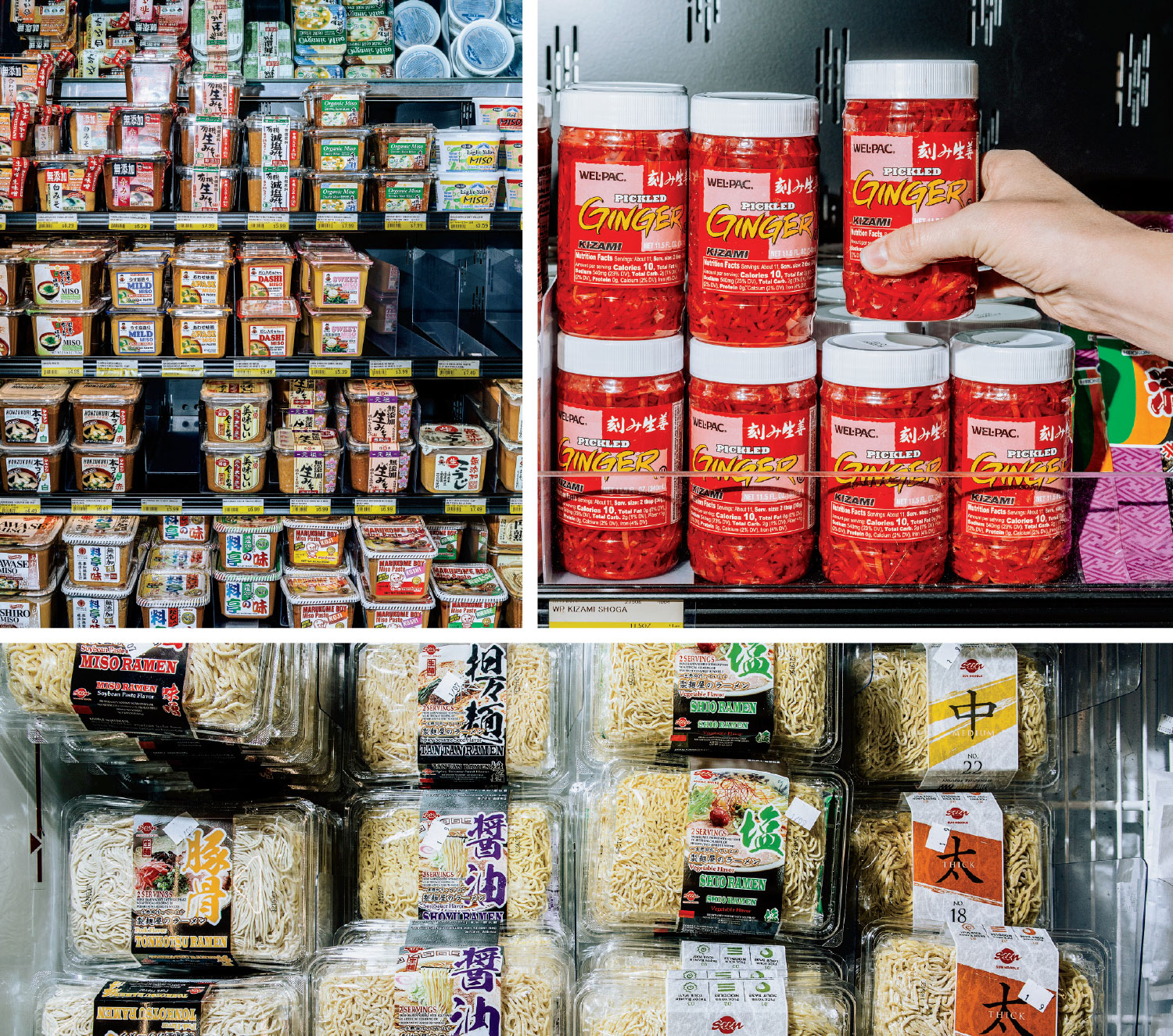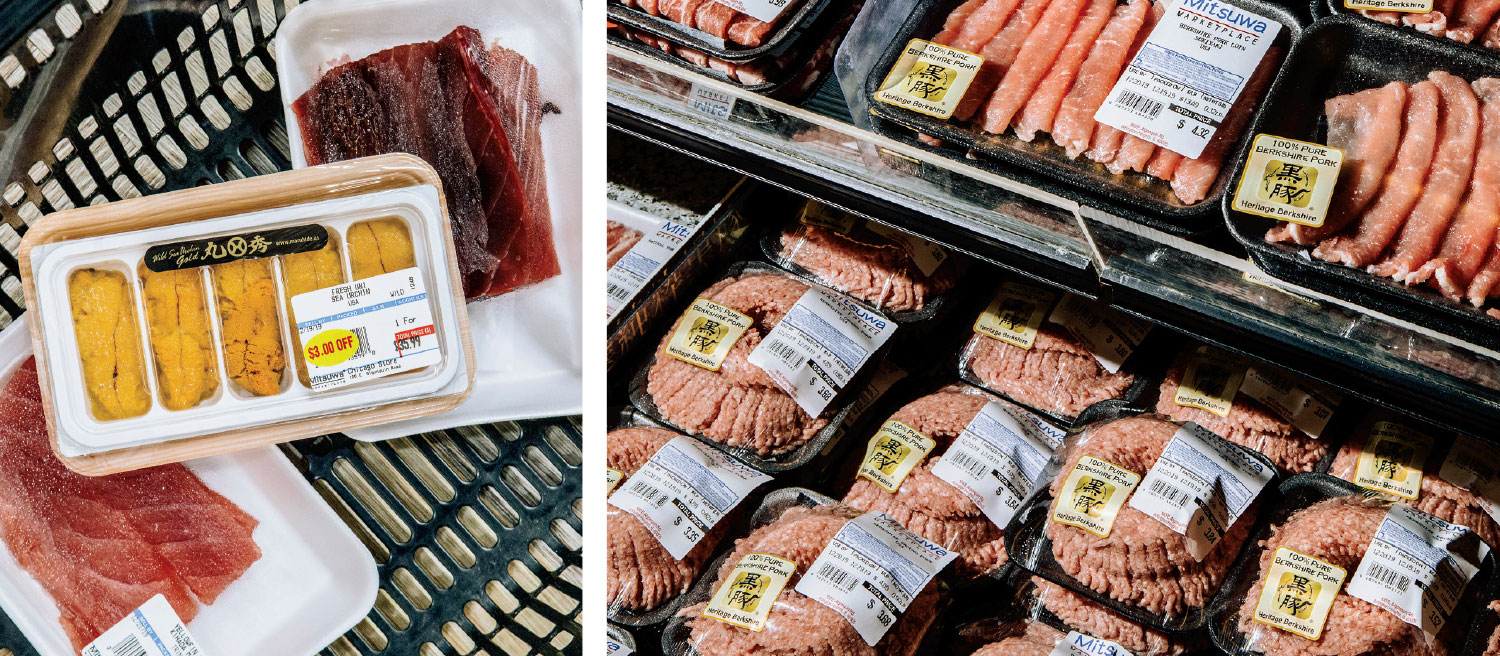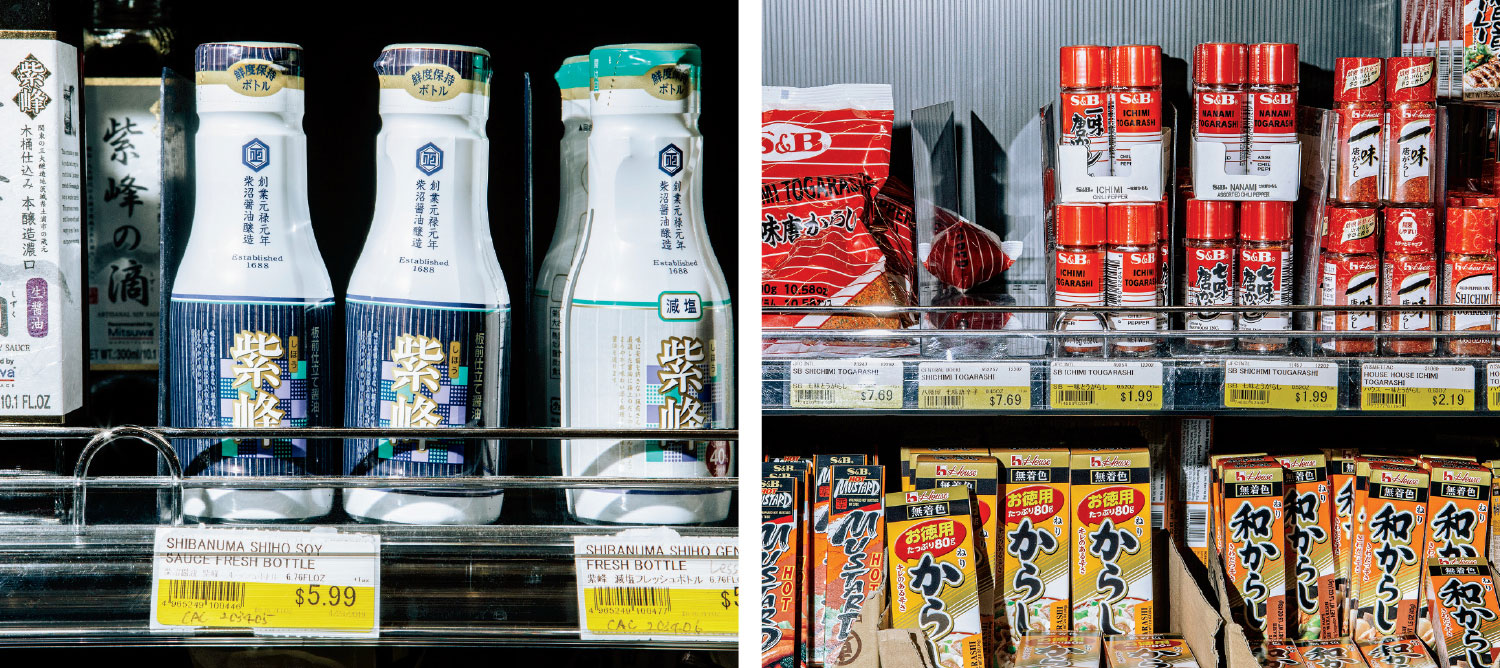
For my first job out of college, I landed at an English-language school in Osaka. While many of my American colleagues took refuge at Makudonarudo (McDonald’s), I became a henna gaijin (weird foreigner) who took to all things Japanese like, well, white to rice. Since then, I’ve been to many Japanese markets, though none enchant like Mitsuwa Marketplace in Arlington Heights. Join me on my regular shopping expedition; I promise there will be lunch at the end.
When I enter, I turn right toward the produce section to pick up shungiku (chrysanthemum leaves) for sukiyaki, or nagaimo (mountain yam) to make okonomiyaki. The refrigerated cases hold many treasures, including scores of misos. I look for the elegant, not-too-salty Hikari organic awase white miso with dashi (fish broth) to make quick miso soup, and robust Yamajirushi unpasteurized red miso for shellfish or mushroom soup. I visit the pickle section for a jar of beni-shoga — the salty ruby-red pickled ginger that goes with yakisoba and curry rice. At the ramen case, I pick up fresh Sun Noodles (the kind the best restaurants use), along with their ramen bases.

And now: fish! I always have sashimi for dinner the day of a Mitsuwa shop — hamachi (yellowtail), kanpachi (amberjack), toro (fatty tuna belly), uni (sea urchin) — along with tiny asari (Manila clams) that I boil open in red miso soup. Beyond the fish lies a wonderland of quality meat — tiles of super-fatty (and super-expensive) wagyu beef to sear for yakiniku, slivers of prime rib eye for shabu shabu, ground Berkshire pork for gyoza. It’s the dry goods that have long been the backbone of what my kids call “Daddy’s weird Japanese shelf” in the kitchen. Most Japanese recipes call for some combination of soy sauce, mirin (sweet cooking wine), and dashi. I’ve tried different soy sauces but always return to the complex, barrel-aged Shibanuma. Yamaki Katsuo and Kombu Dashi bags (the awase variety in the green package) are tea bags filled with smoke-dried bonito and kelp — you just let them steep in boiling water to make your broth. I never leave without picking up some rice. I love the Hitomebore variety, which cooks up soft and glossy. I always pick up condiments, including shichimi togarashi, the seven-spice hot sprinkles found at every ramen joint, and yuzu kosho, a paste of yuzu, hot chile, and salt — get the Fundokin brand.

If the bakery line isn’t too long, I’ll pick up a loaf of shokupan (milk bread), and then it’s time to check out and get lunch. I’m obsessed with a stall called Tokyo Shokudo. The curry rice topped with a juicy, crunchy fried pork cutlet is a balm for my soul — it’s just the kind of plate lunch this henna gaijin ate every day in Japan.



